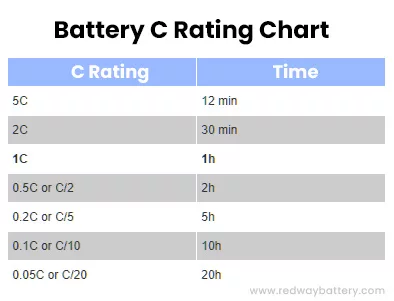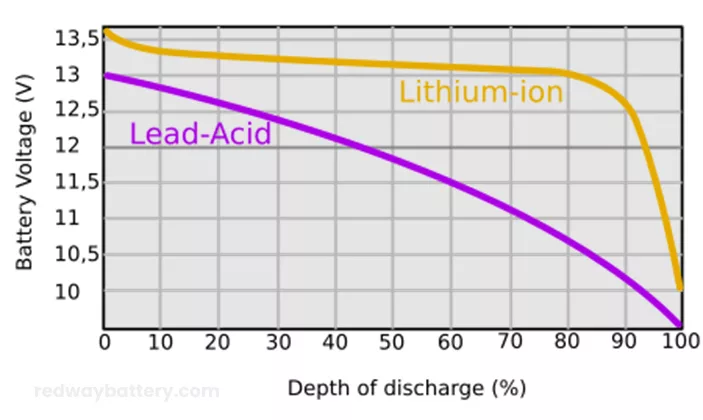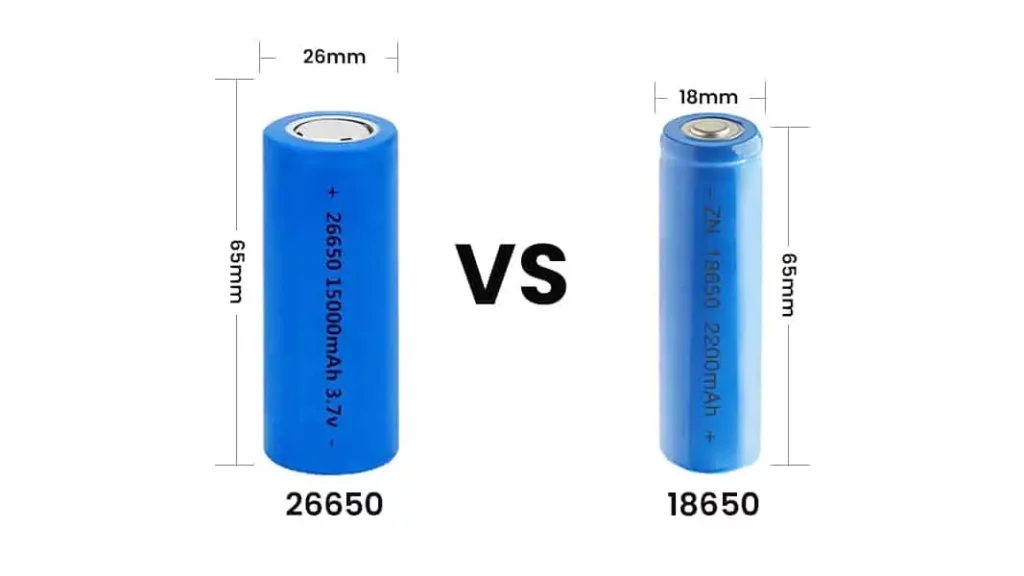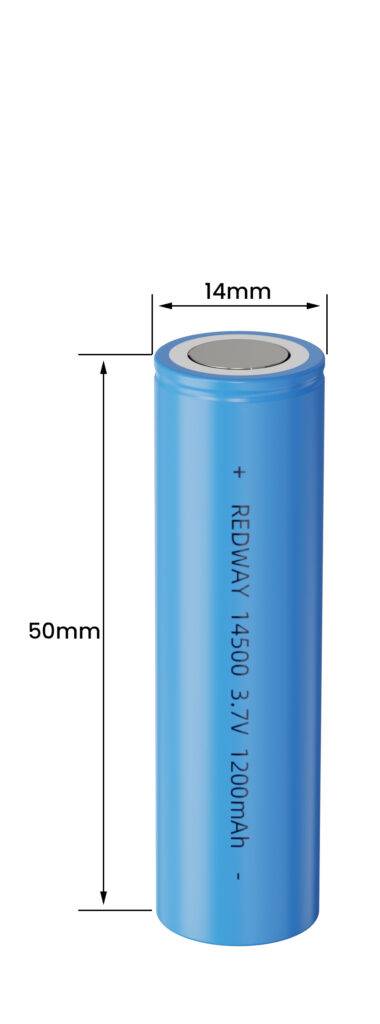Confused about your battery’s C rating? No worries! This post breaks down the essentials, explaining what C rating is, why it varies, and how it affects lithium-ion batteries. Get ready to become a C rating expert without the confusion!
What Is Battery C Rating?
Unravel the mystery of Battery C rating—an essential consideration when selecting batteries for your devices. This rating determines the safe discharge rate without causing harm, and it’s expressed in relation to the battery’s capacity.

- Decoding “C” Rating: The “C” in C rating denotes Capacity, signifying the safe discharge current a battery can sustain. For example, a 1000mAh battery with a 1C rating can provide a continuous discharge of 1000mA (1 amp) without damage.
- Variable C Ratings: Not all batteries are equal; even with the same capacity, they may have different C ratings. This disparity arises from diverse materials and chemistries used in batteries, influencing their ability to handle high-discharge rates.
- Lithium-Ion Dynamics: Generally, lithium-ion batteries boast higher C ratings compared to other rechargeable types. However, their chemistry and construction demand careful handling and monitoring during charging and discharging to ensure longevity and optimal performance.
Why The C Rating Are Different Between Different Battery?
Dive into the world of Battery C ratings—a critical factor in understanding a battery’s current delivery capabilities relative to its capacity. Uncover the key influencers behind varying C ratings among different batteries.
- Chemistry Dynamics: The type of chemistry significantly impacts C ratings. Lithium-ion batteries, with their ability to endure numerous discharge and recharge cycles, boast higher C ratings compared to lead-acid counterparts.
- Size and Heat Dissipation: Size matters. Smaller batteries, with limited surface area, tend to have lower C ratings as they struggle to dissipate heat efficiently. Larger batteries, on the other hand, can handle higher C ratings more effectively.
- Material Quality Matters: The quality of manufacturing materials matters. High-quality components enhance conductivity and reduce internal resistance, enabling better current delivery and minimizing energy loss.
- Environmental Impact: Environmental conditions, especially temperature, impact C ratings. Batteries designed for higher temperatures may feature elevated C ratings compared to those intended for colder environments.
Understanding these factors is crucial when selecting a battery tailored to your specific needs and application requirements.
Battery C Rating Chart
Unlock the power of your batteries with the Battery C Rating Chart. This essential tool reveals a battery’s maximum discharge rate, ensuring optimal performance and longevity for your devices.

- Significance of C Rating: The C rating signifies a battery’s safe maximum discharge rate without compromising its overall capacity. Higher C ratings indicate greater discharge capabilities, with a C rating of 10, for instance, allowing a discharge rate ten times its capacity.
- Variability in C Ratings: Not all batteries share the same C rating, as factors like size and chemistry influence this metric. Manufacturers may use custom ratings, deviating from industry standards.
- Critical Consideration in Selection: When choosing a battery, selecting an appropriate C rating is crucial. Opting for one with too low a rating may lead to subpar performance or damage to both the battery and equipment.
- Importance of Chart Utilization: Utilizing the Battery C Rating Chart is key to understanding and optimizing your batteries. This knowledge ensures that your devices perform at their best while maintaining the health of your battery.
How To Calculate The C Rating For The Battery?
Calculating the C rating is vital for battery users. It helps determine safe discharge rates and allows for estimating output current, power, and energy based on the battery’s capacity:
Cr = I/Er
Er = Rated energy stored in Ah
I = Charge/discharge current in A
Cr = C rate of the battery
t = Charge/discharge duration
Calculate charge and discharge time
t = Er / I
Calculating the C rating for a battery is essential to know how quickly you can discharge it without damaging its internal components. The formula for calculating the C rating is straightforward, but it requires some basic knowledge about your battery’s capacity and discharge rate.
Firstly, determine your battery’s nominal voltage and capacity in milliamp-hours (mAh). Next, divide the mAh value by 1000 to convert it into ampere-hours (Ah). Once you have both values noted down, multiply them together to get the total watt-hour capacity of your battery.
Once you have established this figure, look at your manufacturer’s data sheet or specifications to find out what their maximum continuous current discharge rate is. This number will typically be given as either a multiple of the minimum Ah value or expressed directly as an “x” factor next to “C”.
Calculate the C-rating by dividing this maximum continuous current discharge rate by the total watt-hour capacity of your battery. Remember that different batteries may have varying formulas or ways of expressing their ratings so always consult with manufacturers’ guidelines specific to your device.
What Are The Effects Of C Rating On Lithium-ion Batteries?
Unveil the impact of C rating on lithium-ion battery performance and lifespan. Discover the delicate balance between power delivery and stress on the battery’s cells.
- High C Rating Dynamics: A high C rating empowers lithium-ion batteries to deliver more power swiftly, but it also subjects the cells to increased stress. Rapid discharge generates heat, potentially damaging the cell’s electrolyte and shortening the battery’s overall lifespan.
- Consequences of High Discharge Rates: Frequent high-discharge scenarios or use with devices demanding excessive current may lead to reduced battery capacity and shorter lifetimes. Managing discharge rates is crucial for optimal battery health.
- Importance of Appropriate C Ratings: Opting for a lower C rating than recommended can result in sluggish charging and diminished performance. Choosing batteries with suitable C ratings tailored to your specific needs is essential for ensuring optimal functionality and longevity.
Understanding the interplay of C ratings with lithium-ion batteries is key to making informed decisions about the type of battery that best suits your requirements while ensuring its durability over time.
What Is The C Rating Of My Battery?
Unlock the importance of understanding your battery’s C rating to match your device’s current requirements. Empower your decision-making process with insights on calculating C rating and its impact on lithium-ion batteries.
- Smart Decision-Making: Armed with knowledge on calculating C rating and its effects, you can confidently make informed decisions when buying a new battery. Always refer to the manufacturer’s specifications for the recommended C rating and stay within the maximum limit.
- Prioritize Safety and Performance: Opt for high-quality batteries with an appropriate C rating to enhance device performance and extend its lifespan. Prioritize safety and reliability in your battery choices for any application.
- Long-Term Benefits: Investing in the right battery pays off in improved device performance and durability. By choosing batteries with suitable C ratings, you not only meet current needs but also ensure long-term benefits for your devices.











